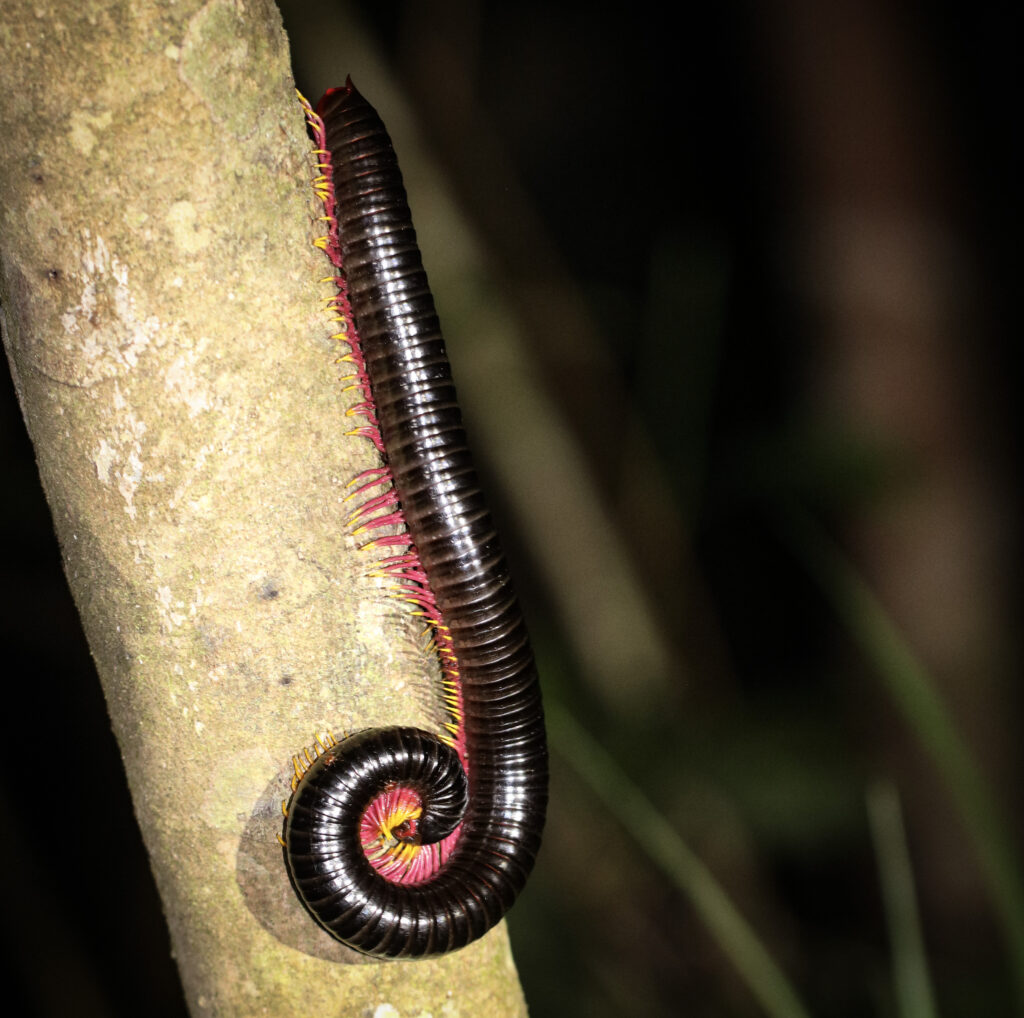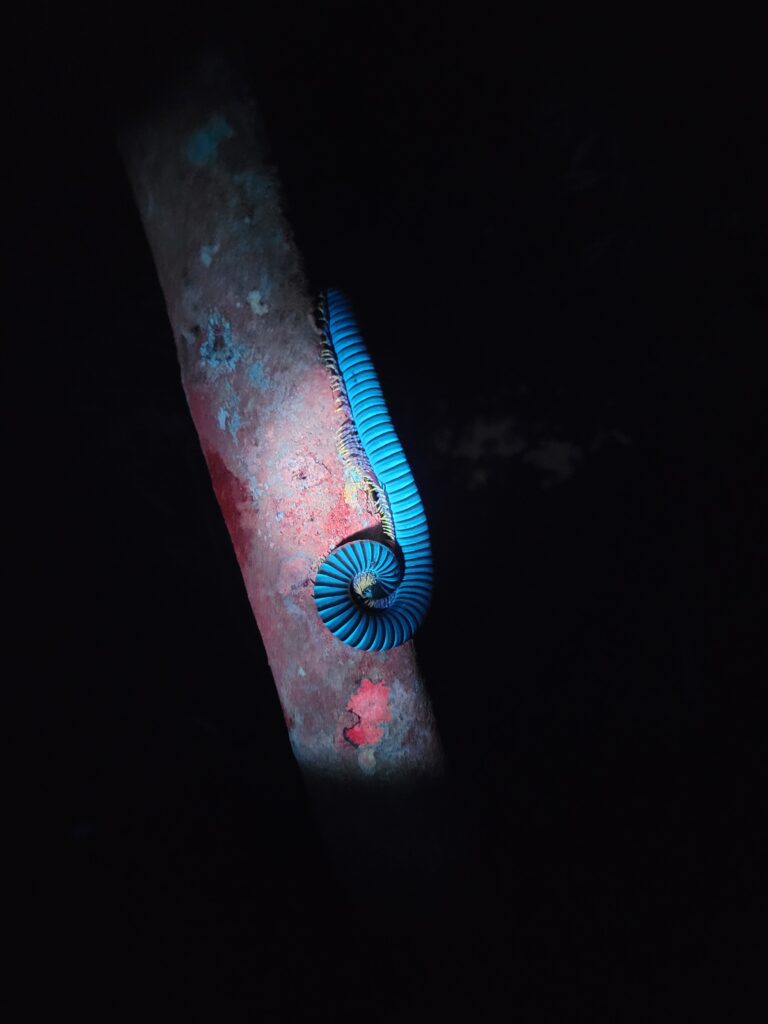I Like Big Invertebrates, and I Cannot Lie
How do they say it? Everything is bigger in Borneo! At least, that is how I felt when I saw some of the invertebrate species during my time in Sarawak. Below are a few of the species I could identify.
Giant Golden Orbweaver (Nephila pilipes)
I missed out on seeing some of the cool spiny orbweavers in Sarawak, but I was lucky to see a couple of the giant golden orbweavers. These are relatives to the golden silk orbweavers found in the southern United States as well as the recently introduced Joro spider.
Like other spider species, the female dwarfs the male. I couldn’t get photos of both in the web, but there was at least one tiny male keeping watch over this beauty. At least one hypothesis postulates that the females of this species are so large to be more fecund, and their size also reduces the effectiveness of male mating plugs. Giant golden orbweavers can achieve their huge sizes due to the ability to molt post sexual maturity, a trait many spider species do not possess. A final fact about their reproduction: females bury their egg sacs in the soil rather than suspend them from their webs or nearby.

Broad-handed Carpenter Bee (Xylocopa latipes)
This chonker of a bee is the largest Xylocopa known and among one of the largest bee species in the world. I have to admit, when I saw this bee, I questioned whether or not it was a bee at all! I couldn’t get over its dark beauty. Apparently, this bee is like our local carpenter bees where it excavates long, branched tunnels for its nest. In the Philippines, they are used to commercially pollinate passion fruit flowers, and research has found synchrony with their active cycles and bloom times of the flower.
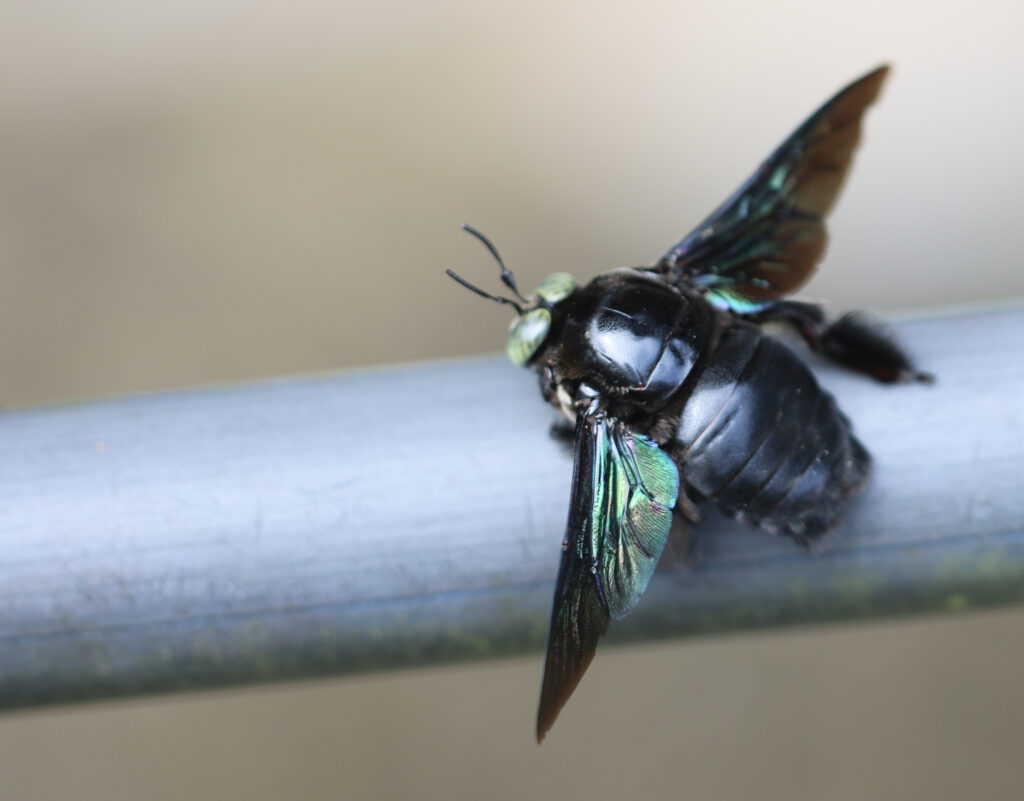
Stick Insects (Order Phasmatodea)
During our night hikes, I viewed many stick insects. To my surprise, I found out that Borneo has some of the richest stick insect diversity in the world, boasting over 300 described species and quite a few that are still relatively unknown to science.
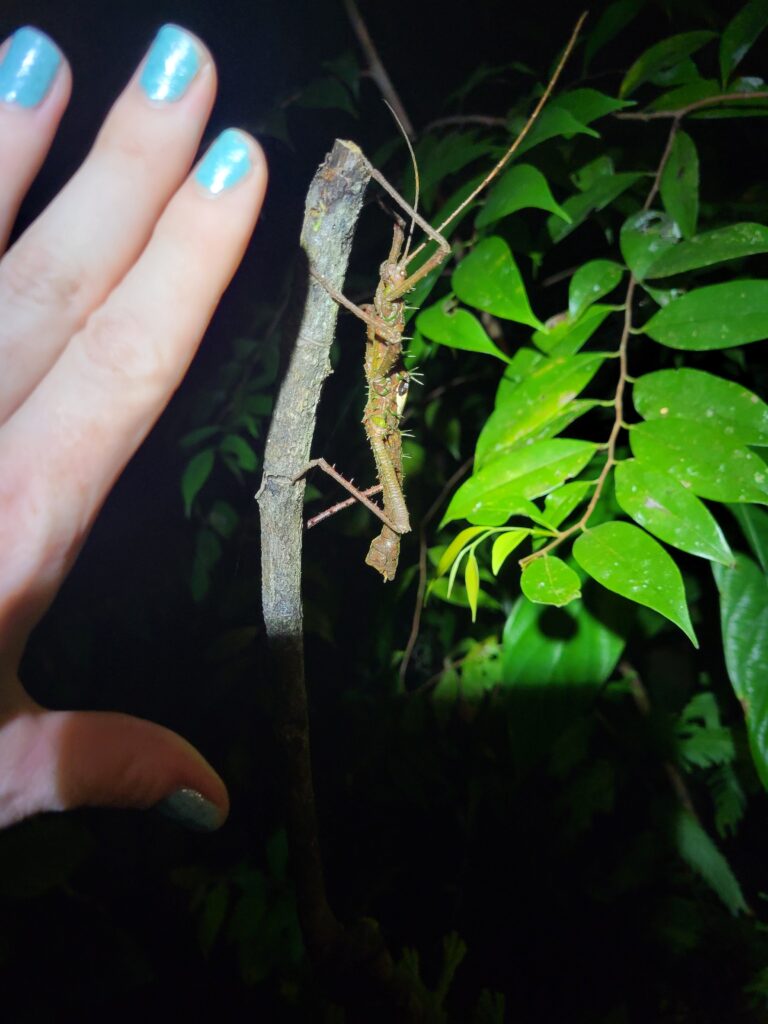
Chalcosoma Beetles
Chalcosoma rhinoceros beetles are found throughout south-east Asia. When I saw the female beetle below, I immediately thought it was an analog to our Eastern Hercules Beetle. Like Hercules beetles, the male Chalcosoma have impressive horns for fighting, sexual selection, and digging to escape potential predators. Females are less showy, but in Chalcosoma species, the females are quite hairy. Apparently, the stiffness of the hairs on her elytra can help with identification between a few closely related species. I did not know this at the time when I viewed the one below, so she will remain Chalcosoma sp. This group contains the Atlas beetle (Scarabaeidae).
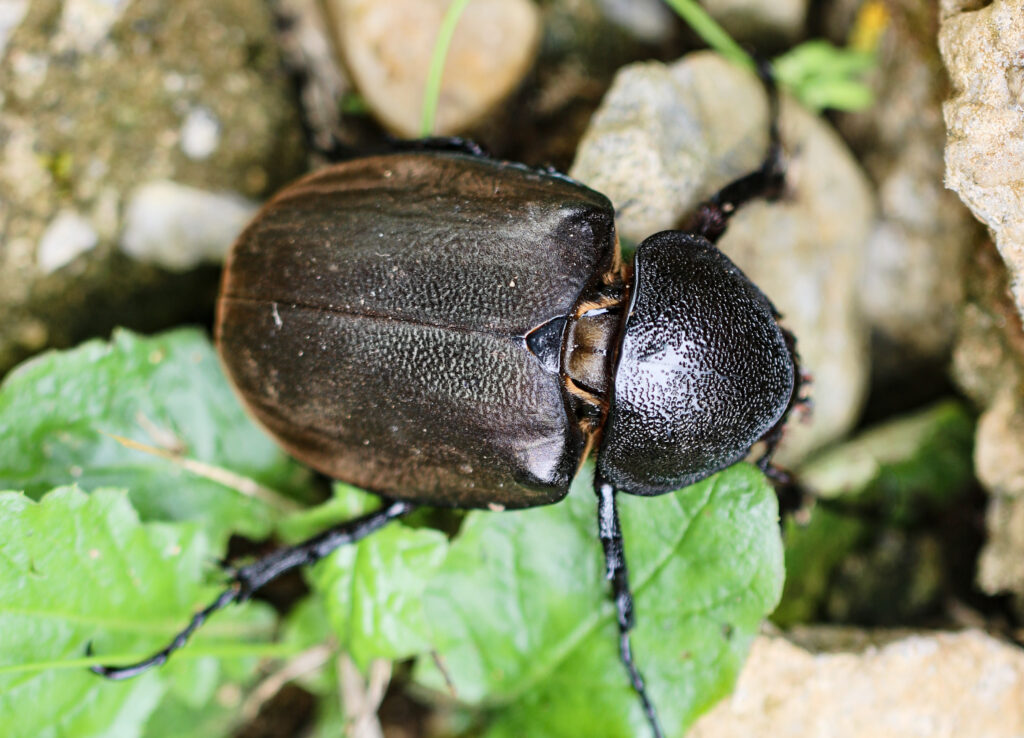
Lichen Huntsman Spider (Heteropoda boiei)
I was impressed by the leg span and coloration on this spider while out at Bako National Park. I could find very limited information about this species online, most of which talked about its fantastic camouflage abilities but also quite a few sites listed them for sale ranging from $75-$110+ per adult spider. Without much information on the actual species, it makes me wonder how many of these spiders are being poached from the wild and sold online. The lack of regulations and the rise of social media popularizing exotic pets like unique spider species has led to a burgeoning illegal and unsustainable trade for spiders.
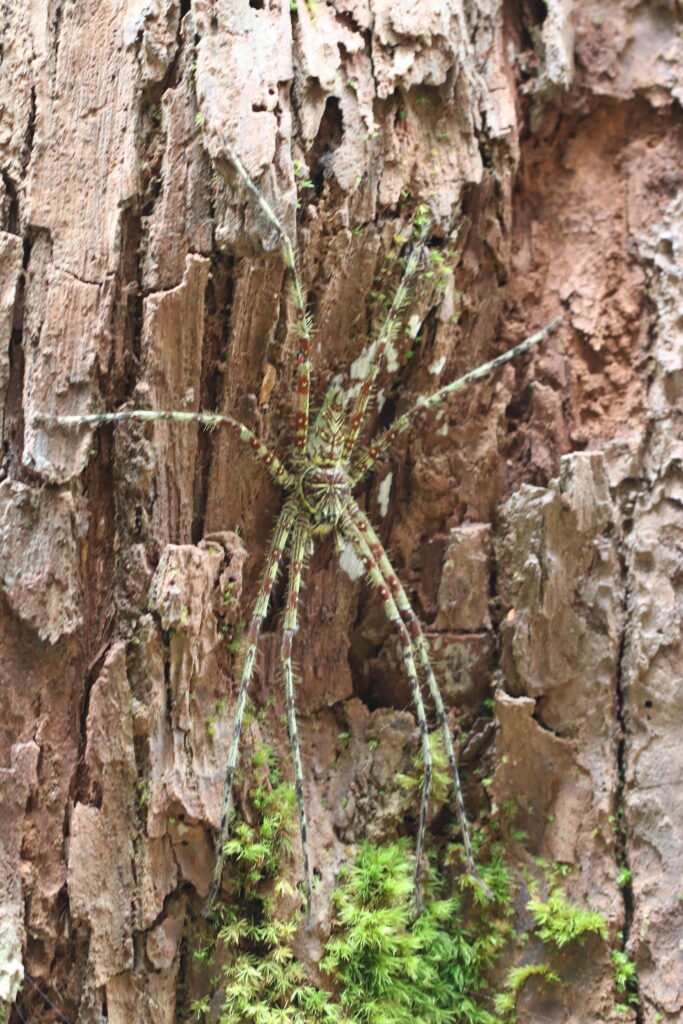
Flame Leg Millipede (Trigoniulus macropygus)
Aptly named, the flame leg millipede has bright pink and yellow legs that contrast with its shiny, dark body. Like other millipede species, this one will secrete toxic cyanides when threatened. Nevertheless, like other invertebrates on this thread, this species is popular in the pet trade. Millipedes are typically herbivores, eating fruit, mushrooms, rotting wood, and other detritus. Another fun fact: they glow! Stay tuned for a blog post all about biofluorescence.
